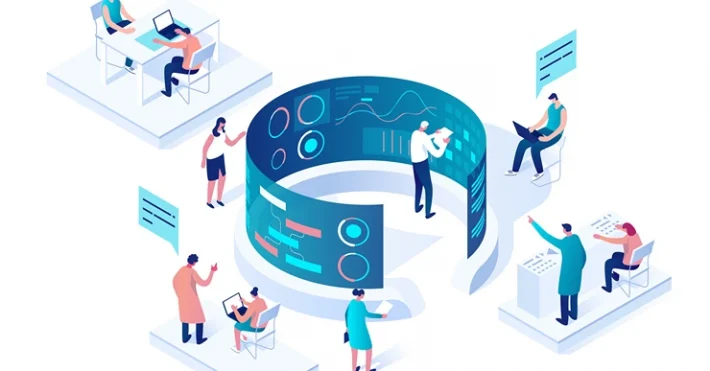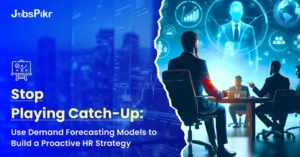Employment. Such a seemingly happy word. But the irony isn’t lost on us. Some workers want to cut back on their hours and some want (and need) to increase their work hours. The latter are almost always paid by the hour. And are always in dire need to clock in more work which will result in an increase in their pay. Surprisingly, even before the virus hit us, roughly one in 10 workers craved to log more work hours. So after the pandemic, babysitters have been asked to come for two days a week instead of five. Retail employees have had their shifts, and pay, cut in almost half. As the economy reopens in fragments, thousands and thousands of workers are seemingly getting back to work, but with way less work than they want, need, and are used to. The worst part? It is so difficult to identify. Let alone fix. Is underemployment is still a big crisis in US?
What Really is Underemployment Crisis?
There are a lot of varied definitions of underemployment (our personal favourite, David Blanchflower in Financial Times), but the essence truly remains the same: there is rampant unemployment alright, but how many people really lack the work they want and need?
The worst part is not that almost 18 million Americans are unemployed. Millions more than that are now underemployed. The difference in how many hours they want to work and the hours they are getting to work are translating into lost income. Which is then quickly converting into very poor consumer spending power and an overall stagnant economy. All this while unemployment insurance payments are expiring, eviction moratoriums are lapsing, and Congress seems to have hit an impasse.
A recent study from the Center for Law and Social Policy (CLASP), a poverty alleviating research and policy matrix, says that underemployment was way more commonplace than government data had us believe even before the lockdown hit us, as discussed. This deep rooted problem was always there, just went unnoticed in front of his bigger brother: unemployment. Now the pandemic recession shows all signs of completely worsening the situation.
How is Underemployment Calculated?
he fact that it went unnoticed also has a lot to do with how it is technically measured. The Bureau of Labor Statistics calibrates underemployment mainly through a single point measure: a basic count of workers who work as freelancers but want more steady month-on-month paying jobs. People whose shifts have been cut into half are not considered, working women who want to but cannot take on more working hours because they cannot afford babysitters, for instance, are not included in the measure. The one that are underemployed for economic reasons are not taken into account. Before the pandemic, almost 4 million workers fell into this category. Accounting for a national underemployment rate of an enormous 3 percent which goes entirely unnoticed.
In an interesting case study, Lonnie Golden, who is an economist at Penn State, along with Jaeseung Kim, who is an assistant professor of social work at the University of South Carolina, used questionnaires to find employees who wanted more work hours while still keeping a flexible schedule. Unlike our previous base which covered freelance versus ‘permanent’ employee. Like, waiters who wanted 18 hours a week instead of 12, healthcare workers who wanted just an extra more shift. Not surprisingly, when taken this neglected cohort into consideration,, the underemployment rate almost doubled and became as high at 8%!
Underemployment translates into the same amount of financial, physical, and emotional stress as unemployment does. Although the intensity is less, which is probably why it is often neglected. Getting people the hours they want makes a world of difference in their lives. They feel worthy.
The pandemic seems like an easy excuse (not denying that it has exacerbated the situation) for all fiscal issues across the globe. But, the CLASP data piece really goes on to show that the finances of American families were on slippery slopes way before the virus hit. Even if the unemployment rate dropped to its lowest point in more than 50 whole years.
Is There an Underlying Social Trigger for Underemployment?
Of course. The jobless rate for Black employees, for example, was almost twice as high as that of their white counterparts. And as for underemployment, as many as a whopping 42 percent of recent college pass outs were working in designations that did not even require a college degree even before the recession began. Imagine getting minimum wage for work well below you qualification. That is another dimension of what underemployment really is.
Several research indicate that the underemployed stuck in part-time jobs are more likely to be women, Blacks, Latinos, or belong to a certain zip code where social mobility is restricted. They also tend to be grouped in certain sectors of the economy: retail, recreation, education and health care.
What Other Factors Have Undercut the Creation of Stable Jobs in the US?
That is a decent summary of the kinds of essential workers who have hit rock bottom in 2020. The most vulnerable to underemployment are now unemployed. Structural economic public policies have been front running underemployment rate since forever. The natural shift towards gig economy, the want of inexpensive child care, maternity leave, low union undercuts, affordable medical insurance: these have all contributed to the staggering rise of underemployment.
Lastly, What About Small Businesses?
The data points for small business point in the same direction too. Payroll facilitator Gusto, for example, has said that the number of people at the small businesses that employ its services are not too different from their pre pandemic levels, but salaries and work hours are significantly down.
Is There a Solution?
Mass underemployment requires baby steps and micro level solutions to help employees make enough money for the bare minimum: food, rent and travel. And of course, macro level policy change to actually help them get what they seek. The most simple and effective policy fix is to make unemployment insurance for not just the unemployed but also those who seek longer work hours and better work. The underemployed cohorts that we have mentioned need to be identified and dealt with separately. On a more expansive note, fair-workweek laws need to be put in place to make scheduling more trustworthy, transparent, and equitable among low-income groups. Along with higher minimum wages and bylaws in place to give already-hired workers access to additional shifts if they need and want.
And the only way to get there? The policymakers would need to lay forth a more structured and staggered approach to slowly earmark underemployment as an issue of national importance.



